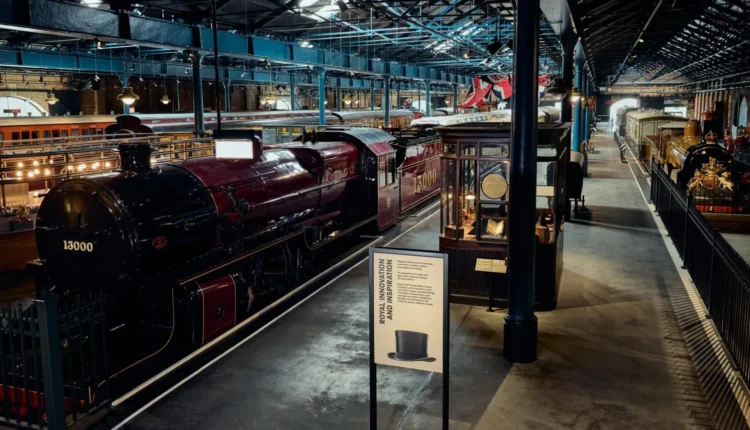Museum reopens station hall for 50th anniversary.
The National Railway Museum (NRM) Station Hall has reopened ahead of its 50th anniversary weekend.
The Grade II-listed edifice, erected in the 1870s as York’s major goods station, remained operating until the 1960s. Since 1990, the building has housed the NRM’s six Royal Train carriages.
It will close to visitors in 2023 to allow a £10.5 million restoration project, financed by the Department of Culture, Media, and Sport (DCMS), to commence. Throughout the restoration, the building’s architecture and structure were significantly improved.
Craig Bentley, director of the NRM, stated that the restoration was “comprehensive”. “We’ve renovated the entire roof, installed new photovoltaic panels to generate electricity, and worked on the listed elevations and externals. “We’ve really sort of safeguarded and protected the building for future generations.”
 Olivia Brabbs/Board of Trustees Science Museum Group
Olivia Brabbs/Board of Trustees Science Museum GroupAccording to Andrew McLean, associate director and head curator at the NRM, the building’s renovations mirrored its original design.
“We’ve opened the old doors, but we’ve added glazing to let the light back in. “Historically this was a goods shed where those doors would have been open during the day so we are bringing that sense of light back in.”
The Friends of the National Railway Museum have contributed an additional £577,000 to the restoration work, which will refresh the exhibitions in the Station Hall.
It includes new purchases, such as the wreath placed on the engine that carried Queen Victoria’s funeral train from Paddington to Windsor in 1901. “This is the first time anyone will be able to see the wreath since then.
“It has been meticulously restored and is a stunning object,” Mr McLean explained.
 Olivia Brabbs/Board of Trustees Science Museum Group
Olivia Brabbs/Board of Trustees Science Museum GroupAnother new addition is a WH Smith bookstall, which was placed in London’s Waterloo Station in 1921.
Curators have also added sounds and photos that tell the experiences of those who have used and worked on railroads during the last 200 years.
It shows images of Windrush migrants who had recently arrived in the UK as they boarded trains from Waterloo Station to travel around the country.
Mr McLean explained that renewing the exhibitions allowed them to convey more stories about the people who worked and travelled on the trains.
“Everyone loves the Flying Scotsman and Thomas the Tank Engine, but they were hazardous places to work.
“We have here on display for the first time a prosthetic leg from a chap challed Howard Jarvis, who lost his leg in 1940 while working on the Great Western Railway.” Mr Jarvis left the limb to the museum.
 Olivia Brabbs/Board of Trustees Science Museum Group
Olivia Brabbs/Board of Trustees Science Museum GroupThe National Railway Museum opened in York in 1975, becoming the first national museum outside of London.
Mr Bentley stated that the choice was controversial. “We’ve seen some fabulous stories, real debate in Parliament about whether the people of York, maybe the people of the north would appreciate a museum.”
Since its inception, the NRM has welcomed 40 million visitors. “I believe it is perfectly correct that you can come and view this in York. “It is a real demonstration of what a national museum outside of London can do.”
According to the NRM, which is part of the Science Museum Group, it has the greatest collection of railway objects in the world and is the most popular free attraction in the region.
“We really pride ourselves in being open for all,” Mr Bentley added.
“I can’t think of any other industry or form of transport that has had such an impact on society.”
Read more on Straightwinfortoday.com


Comments are closed, but trackbacks and pingbacks are open.